Covered Calls are a BAD Way to Take Income From Your Stock
They say that “covered calls” are a savvy strategy to pad your pocket.
It SOUNDS attractive… getting paid monthly (or weekly) while sitting on your stock.
But covered calls come with two BIG problems.
Problem ONE:
If your stock goes up a lot… you may actually have PAY to keep your stock.
Or just say goodbye to it... Seems the strategy of selling covered calls acts as a filter, to sort good stocks out of your account...
...while letting you keep the losers.
Not cool.
Problem TWO:
(and it’s a doozy!)
…covered calls offer almost NO protection of your investment.
We've all heard (or experienced) the horror stories of folks getting a teeny bit of premum, then taking a haircut when the stock falls out of bed.
But what if there were a way to have the best of all worlds?
What if you could enjoy monthly (or even weekly) income…
…but NOT limit your stock’s growth….
…PLUS have it protected in case of a fall?
Then you would be more confident investing for income in any market!
As part of this mini-course, we wanted to give you a peek under the hood of The Blueprint's TWELVE Income Methods.
Let's illustrate how much better you may do by knowing twelve Income Methods instead of the tired old "covered call" play.
Let's compare using KO (Coca-Cola)'s recent price action:
How would covered calls perform, versus using two of the Income Methods in The Blueprint?
Covered Calls Trading: The OLD Way
Say you picked up KO (Coca-Cola) with the intent of selling covered calls every couple of weeks.
You would pick up premium twice a month or more, reducing your cost basis like so:
Covered Calls Trading… the OLD Way
Jan 11: Pick up Shares of KO, sell call Jan 25 Calls
KO teading at $47.34.
You don't buy protection, that's for wusses! 🙂
By selling the Jan 25 $48 call, you take .25 cents premium.
That, subtracted from the beginning investment makes your cost basis $47.09.
So far, so good!
ADJUSTED COST BASIS:: [$47.34] - [0.25] = $47.09
Jan 25: Calls Expire Worthless; Do it Again! Take income: Sell Feb 8
KO is trading at $47.37, only .03 cents growth from Jan 11...
...but because you've been capturing premium, you're in a better place.
Remember? Your cost basis for KO is only $47.09 from the last slide ^ . Nice.
Your short $48 call expires worthless, you keep your KO stock...
...and now you get to sell Feb 8 $48 calls!
That nets you another .25 cents, bringing your cost basis even lower.
Looking good again!
ADJUSTED COST BASIS:: [$47.09] - [0.25] = $46.89
Feb 8: Adjustment (or Say Goodbye)! - Roll Calls at a Debit
WHOOOOAAA!! So at expiration, KO is trading at $49.50.
So your short Feb 8 $48 calls are deeeep in the money.
You're faced with two choices: 1) unload KO at a tiny profit or 2) pay in $1.50 to the position to keep it.
You could just take profits now.
But your idea in the first place was to enjoy continued income from selling calls, and you can't very well do that when the stock is gone.
SOO..!
You might also roll the calls up, buying to close the Feb 8 $48 calls and selling to open the Feb 22 $50 calls for a net debit of $1.05.
If you get called out at $50, that will still be a decent profit.
ADJUSTED COST BASIS:: [$46.89] + [$1.05] = $47.94
Feb 22: OUCH! KO Falls Out of Bed... Net Loss
Rolling the call added to the cost basis... and now your KO stock is valued at only $45.28.
Not the best situation.... but at least you can keep selling calls and limiting your upside... 🙁
SUMMARY: The covered call play does take income.
But it both 1) limits your upside and 2) leaves you open to getting KILLED if the market crashes.
Thank goodness that hasn't FULLY happened to KO.
Yet.
Thank goodness the loss has only been about 6% so far:
ADJUSTED COST BASIS:: $47.94
PRESENT VALUE OF KO: -$45.28
NET LOSS: $2.66 or 5.61% of original investment.
SOOoooo... covered calls didn't cover our @$$.
But ya know... when the only tool you have in your belt is a hammer... every problem starts to look like a nail.
Rather than limiting ourselves to the one-trick pony of covered calls,
...let's compare this same trading scenario with the "RPM" method:
RPM Trading... The NEW Way
Okay: same stock, same timing... KO (Coca-Cola).
Only this time, we'll start with protection: a far-out (June) $48 put option.
Being protected doesn't mean that we can't also use Income Methods to enhance our returns... BUT!
If we simply use Covered Calls, there's a problem.
The covered call limits the upside potential of Coke.
But if we use Income Method #6 (an At-The-Money Bear Call Spread), we can still capture premium, but leave the upside open for growth.
Behold:
RPM Trading… The NEW Way
Jan 11: 1st and Foremost! Buy protection
The way an RPM trade begins is not considering how much we could make... but how much we might lose.
So along with buying KO at $47.34 on January 11, 2019,
...we're also going to buy a far-out in time put option. Slightly in the money.
I'm going for the June 2019 $48 put option for $2.56.
The idea is to limit our loss to 3.8% by having a much more reliable measure than a "trailing stop".
The put option gives us perfect control of our exit.
COST BASIS: [$47.34] + [$2.56] = $49.90, $48 put protection
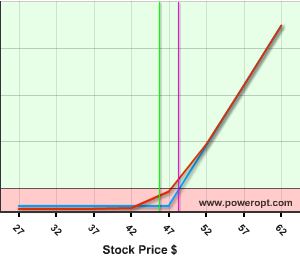
The RPM Method is the polar opposite of a covered call. You pay for protection, but cannot lose more than single digit percents
Also Jan 11: Take Income – Income Method #6
By selling the Jan 25 $48 call and simultaneously bying the Jan $49 call, we'll generate almost as much income as the covered call seller.
Key difference, though!
Rather than limiting the upside... if KO wants to go up, there's no theoretical limit to how far it does.
SELL Jan 25 $48/$49 Bear Call Spread for $0.19
ADJUSTED COST BASIS:: [$49.90] - [$0.19] = $49.71, $48 put protection
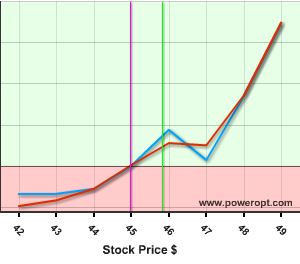
"Income Method #6"... selling a bear call spread in context of a married put... generates income but doesn't limit upside. It does make an interesting chart 😉
Jan 25: Take income Again – Income Method #6
Sure enough, again we take income without limiting our upside.
SELL Feb 08 $48/$49 Bear Call Spread for $0.17
ADJUSTED COST BASIS:: [$49.71] - [$0.17] = $49.54, $48 put protection
Feb 08: Make Adjustments – Income Methods #3 and #6
Here's where the covered call trade got hung up: the short $48 calls limits the upside of the growth of KO.
By rolling the short $48 call, a covered call trade adds to the cost basis, without adding protection.
But..! The RPM trade gets adjusted in a much better way.
First, Income Method #6 adjustment:
We roll the Bear Call Spread, from Feb 8 to Feb 22.
We stick with the $48/$49 strike prices, because that's how we roll (yes, pun intended... SORRY!)
It's .95 cents debit to close the Feb 8, and .75 credit to open the Feb 22 spread, so our cost basis goes up .20 cents
ADJUSTED COST BASIS:: [$49.54] + [$0.20] = $49.74, $48 put protection
Surprise Surprise! Income Method #3, #4 and #9 have to do with manipulating the put options for profit.
In this case, let's say Income Method #3: roll the June 2019 $48 put to a March $50 put for even money.
That is, the June $48 put is sold to close for $1.30, while the March 15 $50 is bought ot open for $1.30.
No change in cost basis... but now the stock is protected at $50!
So on Feb 08 all the way to March 15, this makes the situation:
ADJUSTED COST BASIS: [$49.54] + [$0.20] = $49.74, $50 put protection
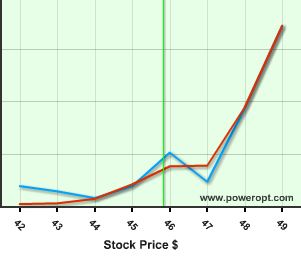
When the cost basis of both your stock and put is LESS THAN the strike price of the put, you are "Bulletproof!"
Hey, didja SEE that? When the cost basis for both the stock and the put is LESS THAN the put's strike value, we call that "BULLETPROOF". Unlimited upside potential, but no consequences if the stock falls out of bed.
Which is exactly what happened on Feb. 22...
Feb 22: Net profit, EVEN with stock down from where we started
Let's visit Feb 22 again. KO is at $45.28.
Remember how painful that was for the covered call sellers?
But rather than nursing our wounds, the "Bulletproof Vest" gave us the ability to have further upside, IF it was going to happen...
...but total protection in case of disaster.
So after the smoke clears, here we are with KO shares:
Cost basis for stock and put: $49.74
Guaranteed sell price til March 15: -$50.00
Total AT RISK: -$ .26 (yes, that's negative risk)
We might now cash in the March 15 $50 put, sell out stock and exit at a profit, even though KO is lower than where we started.
OR, we may decide to reboot this RPM with a new put option and take our pick of twelve Income Methods.
Contrast these "options" with the performance of Wall Street's darling: Covered Calls.
In the same timeframe it would have exposed you to frightening lows.
The Blueprint: Bulletproofing Trades While Taking Income Twelve Ways
So whaddya think, Traders?
Wanna keep chasing the rainbow with covered calls?
Or would you rather have the benefit of TWELVE different adjustments to reduce your cost basis, collect income, or both… while being extremely protected against a down move?
Tell me all about it in the comments.
The Blueprint will release again in late March or early April. In the meantime you can join the waiting list and take a free mini-course here.
Happy Trading!
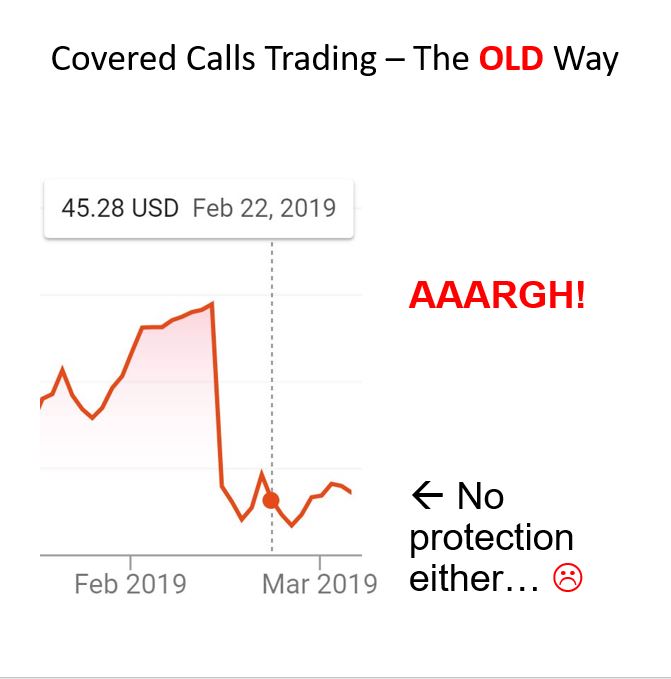
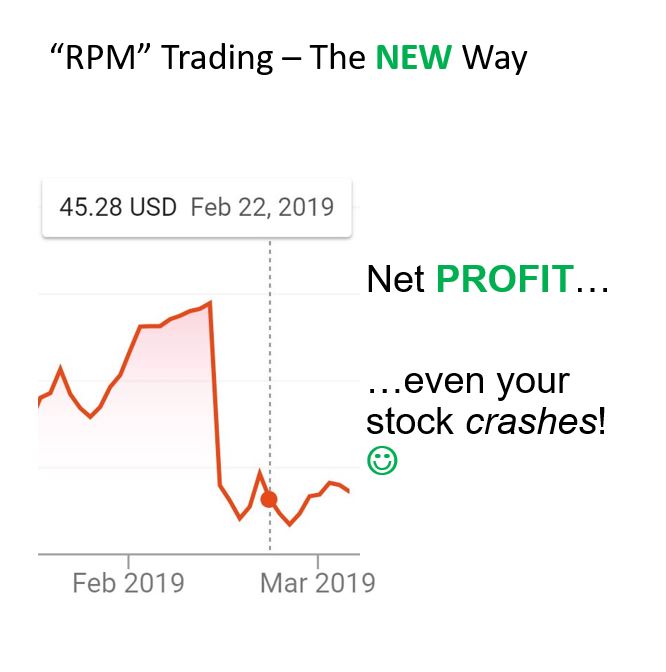
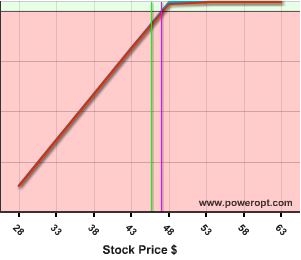
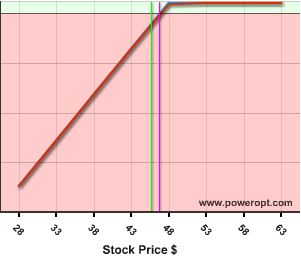
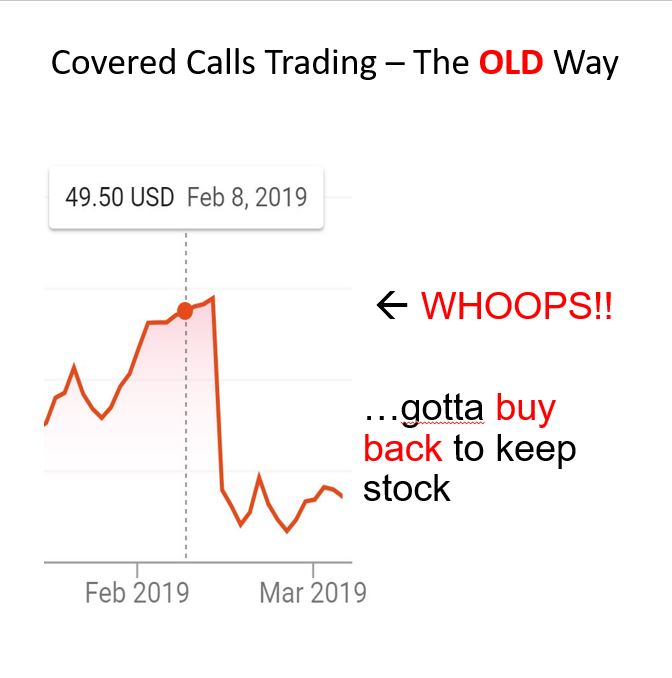
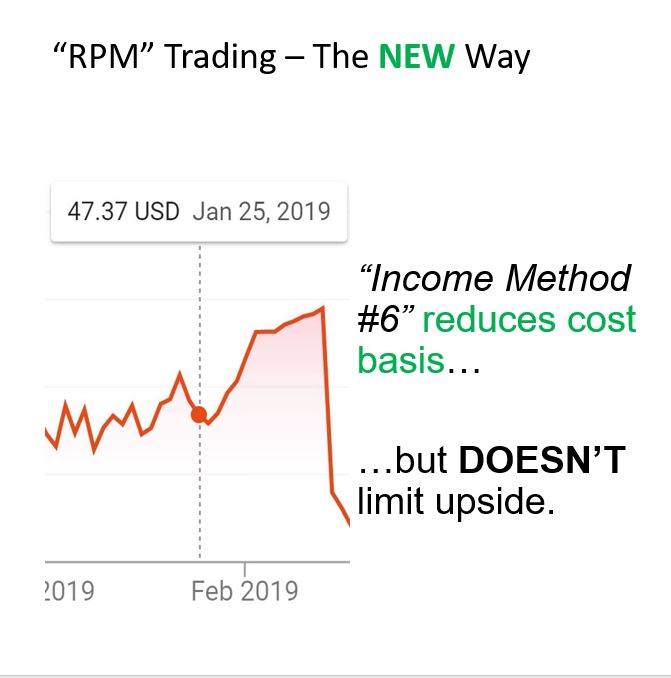
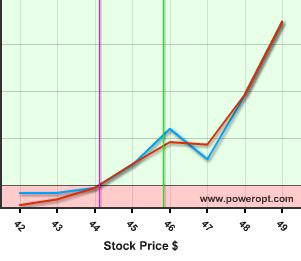

 I'm Kurt Frankenberg, and I have discovered how to truly put the odds on the side on the individual investor.
I'm Kurt Frankenberg, and I have discovered how to truly put the odds on the side on the individual investor.
Hi Kurt, using this method of covered call writing (bear call credit spreads), is it not now possible to buy a protective put with a higher strike than the short call? Thanks!
Hi Andrew! It’s POSSIBLE, but not necessarily advisable.
That is, unless you expect your underlying to go down in the near future.
The whole idea behind a married put is to allow your stock to grow, while insuring it against loss in case of a downturn.
Selling a call for income, while simultaneously buying a higher strike put may give you a loss if your stock goes UP… which is the opposite of what you expected when you bought stock in the first place.
Thanks for the Q, Andrew! Keep ’em coming.
Happy Trading,
Kurt
Hey Kurt,
Quick question – bought the Blueprint years ago and recently brushed the dust off and going through it again. It’s a little out dated but the concepts are still the same. I have recently circled back to a more conservative style investing. Older now and need to take less risk but I still like to trade the markets. I had forgotten how you could combine different option trades along with the married put. Thanks Kurt for you honest and affordable approach to trading.